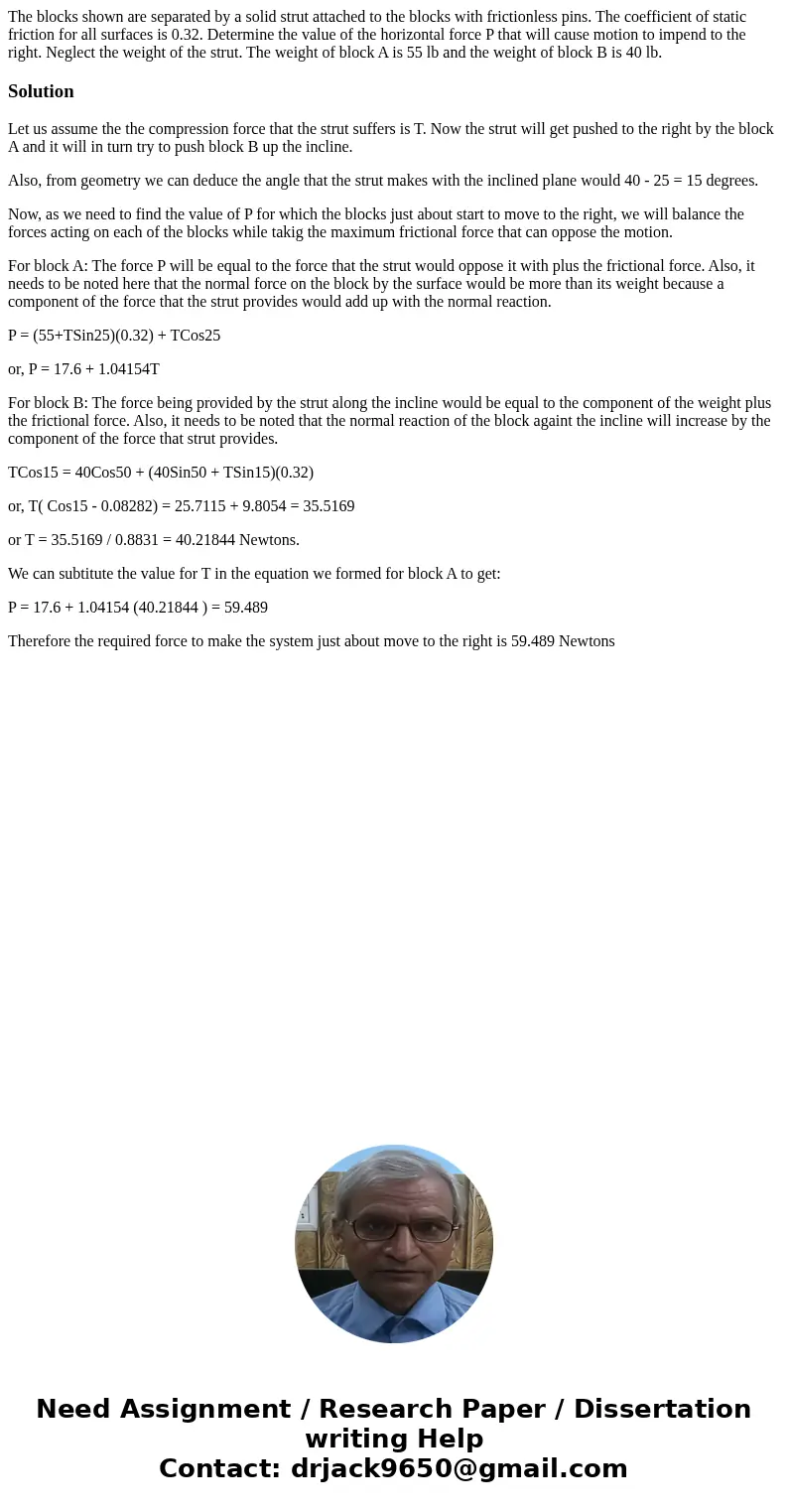The blocks shown are separated by a solid strut attached to
Solution
Let us assume the the compression force that the strut suffers is T. Now the strut will get pushed to the right by the block A and it will in turn try to push block B up the incline.
Also, from geometry we can deduce the angle that the strut makes with the inclined plane would 40 - 25 = 15 degrees.
Now, as we need to find the value of P for which the blocks just about start to move to the right, we will balance the forces acting on each of the blocks while takig the maximum frictional force that can oppose the motion.
For block A: The force P will be equal to the force that the strut would oppose it with plus the frictional force. Also, it needs to be noted here that the normal force on the block by the surface would be more than its weight because a component of the force that the strut provides would add up with the normal reaction.
P = (55+TSin25)(0.32) + TCos25
or, P = 17.6 + 1.04154T
For block B: The force being provided by the strut along the incline would be equal to the component of the weight plus the frictional force. Also, it needs to be noted that the normal reaction of the block againt the incline will increase by the component of the force that strut provides.
TCos15 = 40Cos50 + (40Sin50 + TSin15)(0.32)
or, T( Cos15 - 0.08282) = 25.7115 + 9.8054 = 35.5169
or T = 35.5169 / 0.8831 = 40.21844 Newtons.
We can subtitute the value for T in the equation we formed for block A to get:
P = 17.6 + 1.04154 (40.21844 ) = 59.489
Therefore the required force to make the system just about move to the right is 59.489 Newtons

 Homework Sourse
Homework Sourse